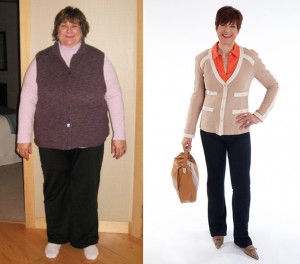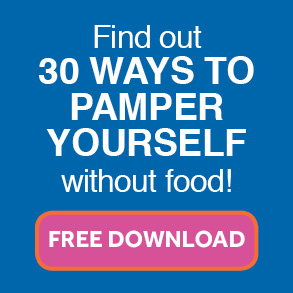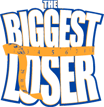Food and addiction. Research and hope. Yes!
 I want to bust a few myths that some people have about obese people. First off, we don’t choose to be obese. We are not lazy and unmotivated. It is not about lack of willpower or lack of desire to get healthy.
I want to bust a few myths that some people have about obese people. First off, we don’t choose to be obese. We are not lazy and unmotivated. It is not about lack of willpower or lack of desire to get healthy.
Trust me, it is not a self-motivated, active choice to eat and eat until you feel sick, just as it is not an active choice to drink too much alcohol and become intoxicated (for some people). If it was an active choice, lots of people I know, including myself, would have beaten it long ago and we wouldn’t have an obesity epidemic in this country.
There is growing research that food is an addiction. And, there is hope we can beat it. It is not easy and those of us in the throws of it struggle mightily to understand it, overcome it, and maintain a healthy lifestyle and weight for life.
I am a living example. I lost 200+ pounds and 80+% body fat in 18 months by changing my lifestyle — inside and out — and dieting successfully under the guidance of nutritional coach Leif Anderson. I succeeded on this diet plan after failing on just about every other diet throughout my adult life. (I think I counted 12+ diets tried in a span of about 20 years. My mom had me on diets when I was in middle and high school.)
So why did I succeed this time when all of the other times I failed? In part, because I was truly ready and committed. In part, because of my steadfast determination and focus. In part, because I had a team of experts guiding me and supporters cheering me on and I trusted them and the process. In part, because I didn’t make excuses and when I slipped had the ability to restart – get back on track quickly vs. letting it spiral out of control. And, in large part, because the plan is an excellent one that constantly kept me moving forward and seeing optimal results — momentum — which in turn kept me motivated.
But there is another very critical component that most people don’t know or talk about. My nutritional plan, through the right approach (fat loss) to diet and exercise, had a positive effect on my brain and, thus, my food addiction and cravings. Wow. Cool. There is hope. (At least according to the article posted here.)
I am still a food addict. I still struggle with compulsive eating, even as I navigate how to change my lifestyle and live in maintenance long term. I was good at fat loss. I am still figuring maintenance out.
Thanks to my friend, Sean Faris, I have learned a lot in the past few months about my food addiction, and how dopamine works in the brain – the brain of an addict. And, recently, with great enthusiasm Sean forwarded me this great article from Idea Health & Fitness titled “Food and Addiction: The dopamine made me do it.”
This fairly “sciency” article is worth the read, and re-read. Not only does it provide solid evidence/research on food and addiction and how it manifests in your brain, but it offers some hope that we can beat it. Yay! I am all about hope. 🙂
At the risk of a post that gets way too long. I offer some of the big takeaways for me from the article. (Note, there are some big words in here. But it is important, good stuff.)
- Is there a relationship between food and addiction? Can food products hijack the reward system in much the same way as drugs? Yes, according to newly published data and a growing chorus of scientists.
- Two human behaviors explain why we’re still here: engaging in sex and consuming food. Both are inextricably linked by dopamine, the neurotransmitter associated with reward and pleasure.
- Obese people had far fewer dopamine receptors in the brain’s striatum, or reward center, and therefore had to eat more to experience the same reward, or “high,” as average-weighted individuals.
- Did these people already have fewer receptors—predisposing them to weight gain—or did they once have a normal number of receptors, which through repeated exposure was down-regulated? The answer is both.
- Hyperpalatables—sugary, starchy, fatty and salty foods — are the main addictive culprits.
- The craving, or “wanting,” question. When people were exposed to their favorite foods but were not allowed to eat them, a tidal wave of dopamine surged through the striatum (Volkow 2002). They said they “hungered” for their food fixes, yet they weren’t hungry at all. This is similar to what occurs in the brains of drug abusers after they watch a video of people using cocaine—or receiving any cue that hearkens back to an addictive pleasure.
- Lean and obese women who demonstrate addictive behavior around food show the same pattern of neural activity as a chronic drug abuser: very high levels of anticipation of their drug of choice—in this case, a chocolate milk shake—but very low levels of satisfaction after consumption (Gearhardt et al. 2011).
- Stressing “moderation” to a food addict is a moot point.
Is sugar as addictive as heroin or cocaine?
Could that cupcake with the mile-high frosting act like crack to a susceptible brain? Animal studies reveal that hyperpalatable diets, and sweet ones in particular, are more rewarding—and potentially more addictive—than intravenous cocaine and heroin (Ahmed 2012).
Why is it so hard?
What about withdrawal from the hyperpalatables in comparison to drugs? Substance abuse researchers note that the brain adaptations that result from regularly eating foods that layer salt, fat and sweet flavors are likely to be more difficult to change than those from cocaine or alcohol because the food-related adaptations involve many more neural pathways. Almost all of the dopamine neurons in the VTA are activated in response to food cues (Wang & Tsien 2011).
Sugar an addiction?
Lab rats will quickly develop a tolerance for sugar, eagerly quadrupling their daily sugar consumption in 1 week. If the sugar’s taken away, the hunger for their fix is relentless and leads to withdrawal symptoms.
When given the choice between sugar, cocaine and alcohol, those cross-addicted rats will always choose—you guessed it—sugar (Johnson & Kenny 2010).
Is it in our genes to be addicted?
When researchers from the Washington University School of Medicine in St. Louis first did a study of almost 40,000 people in the early 1990s, addictive genes appeared to have no impact on body weight. People were just as likely to be obese whether they came from a family with addiction or not. But when scientists did a follow-up study of 40,000 other people in 2001 and 2002, the picture was very different. Subjects were 30%–40% more likely to be obese if they had addiction in the family. For women, the chance was 50% greater (Finucane et al. 2011).
THERE IS HOPE…
What’s the solution?
Eat junk food and your genetic “speech” or expression changes, resulting in a cascade of biological changes, including increased inflammatory processes. Eat an apple and histones order a gene to start a different cascade, resulting in improved immune function. The goals are for histones to script the healthiest messages possible and to maintain happy histones throughout life.
Once born, you cannot alter your genes. What’s exciting about the epigenome is that it adds possibilities. You can change genetic expression, proving that DNA is not destiny. Lifestyle choices powerfully influence genetic expression—and most important, they are passed on to children.
How to overcome addiction?
It is possible to rein in impulsivity, strengthen PFC function and recover from food addiction for a lifetime.
Here are simple, proactive steps to achieve detoxification and sustainable recovery, adapted from The Hunger Fix: The Three-Stage Detox and Recovery Plan for Overeating and Food Addiction (Rodale 2012).
- Mind. Radical stress reduction remains a top priority. Meditation is a central focus of successful addiction recovery.
- Mouth. The goal is to choose foods that promote health through optimal gene expression.
- Omega-3s are used by the brain to form 60% of its fat-based cell structure. These fatty acids ensure that cell membranes will be flexible enough to let in other nutrients.
- Another study found that supplementing with fish oil increased serotonin receptor activation and Brain Derived Neurotropic Factor (BDNF) production (Vines 2012).
- The bottom line. With every mouthful, an individual alters genetic expression. The stronger the PFC, the more likely the choice will be an apple and not a Twinkie®.
3. Exercise. Regular physical activity increases the body’s production of BDNF. This, in turn, can lead to higher PFC functioning.
- Exercise is the best healthy fix because it directly regenerates D2-like dopamine receptors—similar to those linked with food addiction—in the brain, helping to rebuild the damage of past addiction and prevent it in the future (MacRae et al. 1987).
- And it doesn’t require a gym membership, an elliptical trainer or a set of barbells. It simply requires increasing activities of daily living. In fact, it’s been shown that a 5-minute walk around the block or 30 jumping jacks reduces the intensity of withdrawal symptoms. Most studies have found that walking is king.
- The bottom line. Regular physical activity facilitates neurogenesis, augments PFC function and significantly aids in relapse prevention and sustained recovery from addiction.
I just quoted practically the entire article! I will be working over the next few months and beyond to learn, practice and incorporate many of these strategies into my lifestyle. Please share your thoughts, struggles and strategies here. This subject is incredibly important and I am committed to open dialogue on this very personal subject.
Lori
Some other interesting articles I found helpful if you are into the research.
Why you can’t lose weight: Foods as addictive as drugs (posted with the caveat that I don’t believe you can’t lose weight with food addiction. In fact, I am living proof you can.)
When fighting addiction, feed your brain
Fight for your life (blog)







Good information, Lori — I am going to consult with some of my colleagues who study the psychology of food and see if I can track down some more “good science” for you 🙂
Thanks Julie. I have actually read a fair number of articles and most are very “sciency” as I love to say. I found this one most helpful. There is actually a lot out there on the subject when you are looking for it. I like the ones that provide solutions and hope, and aren’t so academic. Thought this one was great. Appreciate your interest and help.
Great post Lori. It’s great to see you draw attention to this so that we as fitness professionals can help our clients through different ways and with different techniques.
Hi Lori–I wanted to share with you the comments shared with me on this topic by one of my faculty colleagues. Dr. Robert Lloyd is an Associate Professor of Psychology at the University of Minnesota Duluth whose area of specialization is physiological psychology:
“Since natural rewards and all drugs of abuse (whether CNS stimulants, eg cocaine, or depressants, eg heroine; including nicotine and booze) both increase dopamine in Nucleus Accumbens (the reward center of the brain), it’s quite logical that food (and sex) addiction exists, and is mediated by the same neurochemical substraits involved in drug abuse. Dopamine in this region is also involved in incentive motivation; probably the core of addiction and relapse. Dopamine is elevated when the rat is eating the food, but is even higher when it is pressing the bar to get the food. When dopamine receptors are partially blocked, the animal takes longer to approach the reward, but consumes just as much. This is interpreted as dopamine mediating “wanting” more than it mediates “liking.” Naltrexone blocks “morphine” receptors, and is used to treat heroine addicts. It’s now being tried with obese patients. Morphine, heroine, and food all increase dopamine in nucleus accumbens” (personal communication, 2012).
Thanks for this post and the information from your colleague Dr. Lloyd, Julie. Very interesting. I had read that the dopamine spike re: the “liking” is nothing compared to the “wanting.” It is in the pursuit, the thinking about it, planning it, and seeking it that the largest spikes occur. Explains a lot. Thanks for engaging in this discussion. 🙂
Lori, you are correct. Dopamine is more of the “wanting” neurochemical than it is the “pleasure” one. As dopamine becomes depleted we have a more difficult time fighting cravings, which is then temporarily raised by whatever it is we are craving, only to drop again, which then becomes a cycle.
I believe the key is to addess what the problem is. The word “addiction” is often misused sometimes. People equate it negatively as perhaps a moral failing. If we can open up a dialogue about what causes some people to over eat, I think it will help fitness professionals, like myself, and others in the wellness industry to help work with their clients more effectively.
Thanks Sean. I wish we could get more of an open dialogue going about food addiction and solutions to beat it, but like you said I think there is a social stigma that so many have – maybe even many of us with food addiction – that it is a moral failing of some sort. NOT! Is alcohol or drug addiction a moral failing? No. Is being addicted work, as you said last night, a moral failing. No. So this one will be tough to combat but I am bound and determined to show people it not only is not a moral failing, but it is a real brain chemical imbalance and there are solutions, strategies and ways to recovery. I am the living proof. 🙂 Thanks for your note and your help in this endeavor. Let’s keep the conversation going and set an example for others to follow. 🙂 Addiction is not a dirty word!
Food Addictions are hard aren’t they! Where does one get support? What ways to help face the addiction and receive not only encouragement, but empowerment are there? Well there are therapies, books, CD’s, coaching, help centers, interventions, and others…
But, the greatest help is ‘Within’! A daily MANTRA can be healing, as well as transforming over time. May I suggest a free booklet…
I highly recommend checking out a FREE eating practice booklet at LuLu . Com Just go to w w w . LuLu . Com & type in: Eating Practice in True Love (by JMM)
Thanks for the suggestion and for taking the time to weigh in. I will check it out.